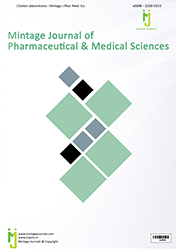PIONEERING PRECISION: TOPICAL AND TRANSDERMAL DRUG DELIVERY
Opinion - (2023) Volume 12, Issue 3
Abstract
Introduction
The field of drug delivery has undergone a remarkable evolution, with advancements in topical and transdermal drug delivery standing as a testament to the relentless pursuit of precision in medicine. These innovative approaches provide an alternative to traditional oral and injectable routes, offering a host of benefits in terms of efficacy, patient compliance, and reduced systemic side effects. This essay explores the profound impact of topical and transdermal drug delivery, shedding light on its potential to revolutionize therapeutic interventions across a wide spectrum of medical conditions.
Description
Topical drug delivery involves the direct application of medications onto the skin’s surface, allowing for localized treatment of dermatological conditions or targeted pain relief. This method proves particularly effective for skin disorders like eczema, psoriasis, and fungal infections. By bypassing the gastrointestinal tract and liver metabolism, topical formulations provide a direct route to the site of action, minimizing systemic exposure and potential side effects. Moreover, the ability to precisely target affected areas ensures that therapeutic agents are delivered exactly where they are needed, maximizing their efficacy.
Transdermal drug delivery transcends the limitations of localized treatment, offering a pathway for systemic drug administration through the skin. This method involves the application of specially designed patches or creams containing active pharmaceutical ingredients that are absorbed through the skin’s layers. The drugs then enter the bloodstream, providing a controlled and sustained release over an extended period. Transdermal delivery is a valuable tool in managing chronic conditions like hypertension, hormone replacement therapy, and nicotine addiction, offering a convenient and patient-friendly alternative to frequent oral dosing.
The success of both topical and transdermal drug delivery hinges on the formulation of pharmaceutical compounds that can effectively penetrate the skin’s formidable barrier. Researchers delve into the development of advanced formulations, exploring strategies such as lipid-based carriers, nanotechnology, and penetration enhancers to optimize drug permeation. These innovations aim to enhance bioavailability while ensuring that therapeutic agents maintain their stability and efficacy during transit through the skin.
The skin’s outermost layer, the stratum corneum, poses a formidable challenge to drug absorption. However, advancements in skin penetration technology have paved the way for more effective transdermal delivery. Techniques like micro-needle arrays and sonophoresis utilize physical methods to create temporary pathways through the stratum corneum, allowing for enhanced drug permeation. These technologies hold great promise in expanding the range of drugs amenable to transdermal delivery, potentially revolutionizing treatment options for a myriad of medical conditions.
Topical and transdermal drug delivery methods align seamlessly with the modern ethos of patient-centric healthcare. They offer convenience, minimize discomfort associated with injections, and improve adherence by eliminating the need for frequent dosing. Additionally, these approaches are particularly valuable for paediatric and geriatric populations, where oral administration may be challenging. By placing the power of treatment directly in the hands of patients, topical and transdermal drug delivery pave the way for a more engaged and empowered approach to healthcare.
Conclusion
Topical and transdermal drug delivery represent pioneering achievements in the quest for precision medicine. Their capacity to deliver targeted treatment, reduce systemic side effects, and enhance patient compliance is revolutionizing therapeutic interventions across a spectrum of medical conditions. As researchers continue to refine formulations and explore cutting-edge skin penetration technologies, we stand at the precipice of a new era in drug delivery. With topical and transdermal methods at the forefront, the future promises a healthcare landscape characterized by personalized, patient-centric care.
Author Info
Talin Voss*Received: 29-Aug-2023, Manuscript No. mjpms-23-117148; , Pre QC No. mjpms-23-117148; Editor assigned: 31-Aug-2023, Pre QC No. mjpms-23-117148; Reviewed: 14-Sep-2023, QC No. mjpms-23-117148; Revised: 19-Sep-2023, Manuscript No. mjpms-23-117148; Published: 26-Sep-2023, DOI: 10.4303/2320-3315/236056
Copyright: This is an open access article distributed under the terms of the Creative Commons Attribution License, which permits unrestricted use, distribution, and reproduction in any medium, provided the original work is properly cited.

ISSN: 2320-3315
ICV :81.58

